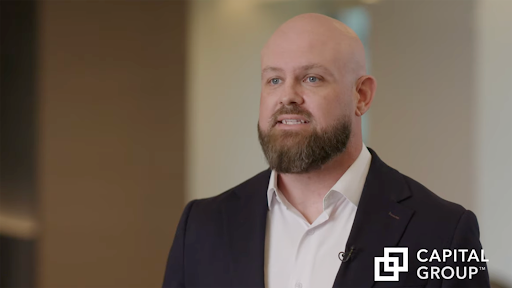Good morning, and happy Monday.
Who knew there was a private-credit investment case for AI? Blue Owl, that’s who.
It’s the biggest private-credit deal ever, at $27 billion. Last week, alts firm Blue Owl announced a partnership with Meta to fund the company’s massive planned Hyperion data center in Louisiana. Is that wise? Well, Blue Owl, which will have an 80% interest, is funding part of the capital via a private securities offering, and is fronting $7 billion in cash, according to MarketWatch. Meta, which gets a $3 billion disbursement at closing, is bringing the land and the construction assets to the table. It marks a big change for how the big tech companies may build out their data centers, given that until now, they’ve paid for the development out of pocket. Who else gives a hoot? BlackRock, for one, whose ETFs have snapped up some of Meta’s debt associated with the deal, The Wall Street Journal reported.
Clearly, it’s turning some heads.
Goldman’s New Fund Designed for PE Returns, Sans the PE

Microsoft. Eli Lilly. Palantir. No one would mistake those stocks for private equity, but they’re the top holdings of a new Goldman Sachs Asset Management ETF designed to mimic PE returns.
The fund’s name is eye-catching for its reference to that: It’s the Goldman Sachs MSCI World Private Equity Return Tracker (GTPE). But make no mistake, it holds no private equity, and that’s a detail that the prospectus makes clear in bold capital letters. Instead, it tracks an index that “seeks to approximate the returns of private equity investments by replicating region, sector and style exposures through publicly listed equities,” according to the document.
The lack of actual PE is very much the point. For Goldman’s institutional investor clients, who already have access to that category, the ETF provides a way to adjust asset-class exposure in portfolios while having liquidity and transparency, said Brendan McCarthy, global head of ETF distribution at Goldman Sachs Asset Management. And for retail investors, it’s a sort of bridge to the forbidden world of PE, or at least the returns it can offer. “This is not private equity,” McCarthy said. “This is private equity replication.”
Private Conversation
Amid the absolute crush of new ETFs on the market, there are some novel strategies that market themselves on mimicry. For example, there are a few that strive to approximate the strategies of renowned investors like Warren Buffett. And others even seek to trade like members of Congress. The Goldman GTPE ETF, of course, is different in character, even if it is a variation on a wider theme. The fund is passive, but it tracks an index that actively changes, and both “are designed to capture the characteristics of buyouts and venture capital,” said Oliver Bunn, who leads the quantitative investment strategies team that manages the ETF. In effect, it looks like where public markets would be if they caught up to PE trends years sooner than they historically have, he said.
Some details about the ETF:
- It is diversified across companies, with 1,550 long holdings (as well as about 500 shorts) and the top 10 representing about 19% of the portfolio. Over half the holdings are US-based, with the next-closest regions being the UK and Canada, each at less than 5%.
- It’s exposed most to information technology (23%), followed by health care (13%) and industrials (13%).
- It launched Oct. 21, has net fees of 0.50% and total assets of $20 million.
Looking Over Your Shoulder: The index and ETF reflect a look into about 85,000 portfolio companies’ ledgers, such as where they invest and in what industries, McCarthy said. “All of that we can replicate in public equities,” he said. “This allows MSCI to create the characteristics of private equity returns.”
What’s Driving the Momentum Behind Fixed Income ETFs

Bond ETFs offer all the things your clients love about fixed income, but with potential benefits that stem from the ETF wrapper. That’s diversification, liquidity, and flexibility.
Thanks to these traits, Finneran likens the surging popularity of bond ETFs to the early “hockey stick” days when equity ETFs took off and became a staple of investment portfolios.
See why fixed income ETFs seem to be gaining ground with advisors.
Capital Client Group, Inc.
New CLO ETFs Launch Amid Bankruptcy-Sparked Pullback
It might seem like a delicate time to launch a collateralized loan obligation ETF.
This month, investors have pulled more than $1 billion from CLO exchange-traded funds in the US, which appears to be the fallout from the September implosions of two companies: Subprime auto lender Tricolor Holdings and auto parts firm First Brands Group. That has led credit managers, including JPMorgan (which lost $170 million related to Tricolor’s bankruptcy), to quickly reassess the corporate debt they hold. It also hasn’t helped that two banks recently reported millions of dollars in losses due to potential fraud on distressed commercial mortgages. Still, one new entrant in the ETF market dove in head-first last Wednesday, launching its second product, a fund that targets lower-quality, but higher-yielding CLOs.
“Reunderwriting is healthy … I feel like people maybe weren’t paying attention as much as they should,” said John Kim, CEO of Reckoner Capital Management, whose Reckoner BBB-B CLO ETF (RCLO) started trading Oct. 22. The two major bankruptcies seem to be mostly isolated incidents, he said, adding that it caused “a modest wind-down in CLO trading, and that is probably a good thing.”
Risk, Meet Reward
Investors can already get exposure to lower credit quality CLOs in ETFs, though the products on the market tend to include higher quality ones as well, Kim said. “We always knew we wanted to bring the mezzanine portion of CLOs back to investors,” he said. “BBBs and BBs provide really good risk-adjusted returns.”
Another firm, Advisors Asset Management, launched a fund last Thursday that spans credit quality. That product, the AAM Crescent CLO ETF (CLOC), comes “in an environment defined by inflation and interest-rate volatility, [when] investors are increasingly looking beyond traditional fixed income sectors to source meaningful income,” AAM Head of ETF Product Lance McGray said in an announcement.
Here’s a look at the two new ETFs, both of which are actively managed:
- RCLO, which charges 0.50% and represents $28 million in assets, uses the JPMorgan CLO High Quality Mezzanine Index as its benchmark.
- CLOC, which bills itself as the lowest-cost CLO ETF at net expenses of 0.18%, represents $50 million and is benchmarked against the JPMorgan US CLOIE IG Index.
- By comparison, there are at least 19 other US CLO ETFs on the market, representing about $37 billion in assets, data from Morningstar Direct show. The funds saw about $14 billion in net flows this year through September.
About that Credit Cycle: Amid concerns about rates going down, the spread on the mezzanine-level CLOs will still beat higher-quality debt, Kim said. “ The returns here should be 7% plus on an ongoing basis, at least where we are with rates,” he said. “This is a really good alternative to high yield.”
More Crypto Deals Are ‘Inevitable’ After FalconX Acquisition of 21Shares

Crypto platforms and ETF providers have historically lived on opposite sides of the fence. That’s quickly changing.
The crypto trading platform FalconX bought UK-based ETF provider 21Shares last week. The deal will allow the firm to launch crypto funds focused on derivatives and structured products, according to a report from The Wall Street Journal. The deal marks an early example of consolidation across both the crypto and asset management industries. “I think it’ll be remembered as one of the early deals of what proves to be a significant trend, not only particularly in the crypto space, but more broadly in the ETF space,” said Ric Edelman, founder of the Digital Assets Council of Financial Professionals. “This really isn’t a crypto conversation. This is a big, broad money conversation [about] corporate America.”
Millennium FalconX
What makes the FalconX acquisition special is that crypto remains a relatively new sector of the marketplace, albeit one with a lot of interest from major industry players and regulators. This makes consolidation in the crypto space a bigger deal relative to other industries, Edelman said. “There are so many ETF providers, and a great many of them simply can’t capture significant market share. Yet they often have good products, so consolidation is inevitable,” Edelman added.
The regulatory landscape, particularly given the SEC’s recent pledge to fast-track crypto ETF launches, is also driving interest. Add in firms experimenting with tokenization, and that could open the floodgates, said Cindy Zarker, a researcher at FUSE Research Network. “We’ve seen some volatility recently, with Ethereum and Bitcoin. It is still a speculative asset,” she said. “But on the other hand, you’ve got the GENIUS Act, so starting to put together more of an overall regulatory framework in the US … facilitates things as well.”
May The Force Be With UK. The deal is the first of its kind, with the closest analogue being crypto ETF provider Bitwise’s purchase of UK-based ETC Group last year, Zarker added. The deal gave Bitwise a stronger position in Europe, where crypto-focused exchange-traded products have been available for longer, she said. “Definitely expect to see other types of mergers and acquisitions, but partnerships too.”
Extra Upside
- Be Like Water: Is there a blind spot about ETF liquidity?
- Sorry, what? The rise of single-stock ETFs may be related to short attention spans.
- Fixed Income ETFs Appear To Be On The Rise. Fixed income ETFs offer investors several potential benefits and financial advisors are taking note. In particular, advisors point to the trading efficiency, diversification properties, and overall versatility of these vehicles. See if fixed income ETFs may make sense for your clients.*
* Partner
ETF Upside is written by Emile Hallez. You can find him on LinkedIn.
ETF Upside is a publication of The Daily Upside. For any questions or comments, feel free to contact us at etf@thedailyupside.com.

